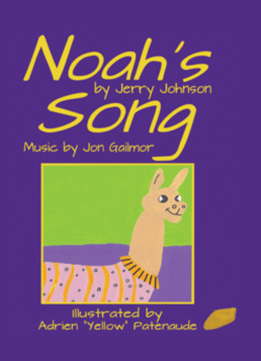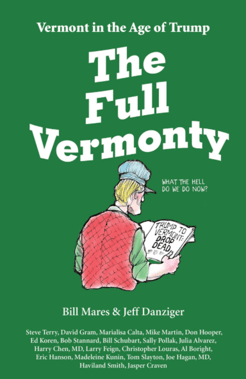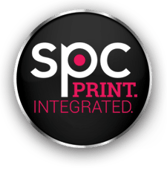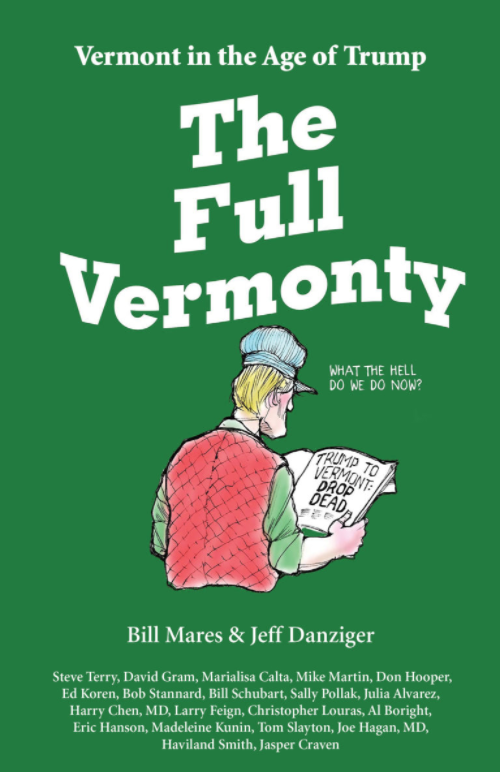Self-Publishing in Vermont is Alive and Well
Have you ever grabbed a book off a shelf and thought, “How did this get here?” It’s a fair question considering how many publishing and printing options are available to writers these days. One huge choice an author has to make is if they would like to go the traditional route, or if they would like to self-publish.
The self-publishing industry has grown and continues to grow each year. It’s not just a bunch of young, indie, hipster authors hidden behind their computer screens, not that there’s anything wrong with that. But all kinds of writers have begun to take non traditional routes when it comes to publishing.
Even here in Vermont there are self-published writers such as poet Jerry Johnson. He is not just a poet; some of his other interests are teaching and tennis. Most people don’t do just one thing anymore, and that’s part of the beauty of self-publishing. When an author has control over their own deadlines, it can be take some of the pressure off. It’s no easy feat to publish a book on top of everything else day to day life requires.
Johnson has published a couple of poetry collections, as well as a children’s book called “Noah’s Song.” Johnson says he’s essentially been writing poetry forever, definitely since grade school. It was always a creative catharsis for him.
“It's something I like to do even if I don't get it published. Just got to get it out,” Johnson said.
So what is it that makes writers not only get their words out on paper, but share those pages with the world? Bill Mares is another Vermont writer, who has also been a teacher, plus a reporter-photographer and a state legislator. He has authored or co-authored 16 books.
“I think just about everybody thinks they’ve got a book they want to write, and maybe that book only comes up after the third beer in the local bar, or maybe it comes up at a book club, or maybe a friend suggests it,” Mares said.
Johnson and his friends knew they wanted “Noah’s Song” to be a children’s book before it was published. Almost a half a year was spent on the 40 illustrations alone, done by Adrien Patenaude. Like his poetry collection that had come before this book, Johnson decided to have his words set to music.
Jon Gailmor recorded his musical version of “Noah’s Song” before the book went to print. Gailmor, along with fellow musician Pete Sutherland, had previously set 16 out of 99 of Johnson’s poems to music in “Up the Creek Without a Saddle.” Gailmor and Sutherland are well known in the Vermont folk music scene and Johnson was very happy to work with them in order to make his book visions come to life.
So, they knew this book and music CD combination could be successful from previous experience, but the fire to expedite the publishing of “Noah’s Song” was lit when Johnson’s friend and illustrator, Patenaude, was diagnosed with cancer. Patenaude wanted to be able to sign some copies of the book, but unfortunately passed away before they were printed.
“I said ‘I have to do something,’” Johnson recounted. “So I got the book published. I did it under my own imprint, Creek Road Press.”
Johnson also promised to autograph the first 500 of these prints and put proceeds towards scholarships in Patenaude’s name. Timeliness played a role in the publishing decisions made around this book. This is also true, though in a different way, for Mares’ most recent book, “The Full Vermonty: Vermont in the Age of Trump.”
“Two things contributed to the attraction of self publishing. One was the shift in the whole publishing industry and their movement towards blockbuster books…” Mares said.
Mares pointed out how there has been a decline in the demand for books that aren’t necessarily best sellers, even if they still sell relatively steadily. He said that bookstores are looking for “explosive” books that you can sell right away and not have to restock. Mares suggested this may have something to do with how bookstores themselves have had to make changes since ordering books online from retailers like Amazon has become so popular. But what else drew Mares, who had mostly chosen the traditional route in the past, to self-publishing? It’s a quick option.
“With this one we decided that time was the important thing here. I didn’t want to be stumbling around, even over the internet, trying to find a publisher for this. We wanted to get at Trump as soon as possible,” Mares said.
Mares worked with Dede Cummings at Green Writers Press to publish and print his book about the recent and controversial 2016 presidential election. He had gone to a meeting to discuss another book idea, but both Mares and Cummings decided to focus on “The Full Vermonty” because of its  relevancy. Green Writers Press, based in Brattleboro, likes to publish books that are in line with their company's mission. They publish a lot of books about environmental activism, which aligns with their ability to offer print on demand technology. Green Writers Press works with Springfield Printing Corporation in Vermont, but they also work with printers in Michigan, Minnesota, and Tennessee.
relevancy. Green Writers Press, based in Brattleboro, likes to publish books that are in line with their company's mission. They publish a lot of books about environmental activism, which aligns with their ability to offer print on demand technology. Green Writers Press works with Springfield Printing Corporation in Vermont, but they also work with printers in Michigan, Minnesota, and Tennessee.
Just because an author is from a small state doesn’t mean their work can’t reach national and global audiences, even if it is self-published, especially with the invention of electronic books. While e-books are environmentally sustainable, so are print on demand books from Green Writers Press. They use soy-based inks on paper made with a chlorine-free process. This is very different from the traditional publisher who prints many books at a time, but is also proof that different isn’t always bad. With a print on demand option, a printer only has to use the paper and resources that are definitely needed. It gives readers the option to ask for books they know they’re interested in, instead of bookstores doing all the decision making for the consumers. Besides the potential for the self-publishing process to be more convenient, quick, and environmentally friendly than going through a well established publisher, are there any other positives?
“The industry’s so different. It may be tougher today to land a traditional publisher than it used to be,” Johnson said of going the traditional route. When it comes to self-publishing and smaller printers, Johnson pointed out that, yes, it might be easier, but it also might be beneficial in a few other ways. “You have control over everything: the design, the layout, the book cover. Plus, every book that you sell you make the maximum that you can make.”
Johnson also said that there are a lot of different ways to self-publish. Mares, who has many books under his belt, has worked with publishers of varying sizes. He calls some of his books “hybrids” because the investment in them was shared between him and the publishers. Before working with Green Writers Press, he also worked with The New England Press and Wind Ridge Publishing, both out of Shelburne.
“I think it’s never been easier to self-publish if you’re not looking for objective praise,” Mares said.
Both Mares and Johnson think self-publishing is a viable option and an accessible way for most anyone to publish their writing. Some authors may just want to self-publish a couple dozen books for their family and friends. Maybe an author wants their readers to be able to use print on demand technology. Then there are writers that want a version of their book available to download on an e-reader. All of these things can be achieved with small publishers and printers, as long as an author is willing to put in the work. If you’ve got a little extra time and money, then you too can be a publisher.
Clara Moses is a freelance writer living in Vermont.






Leave a Reply